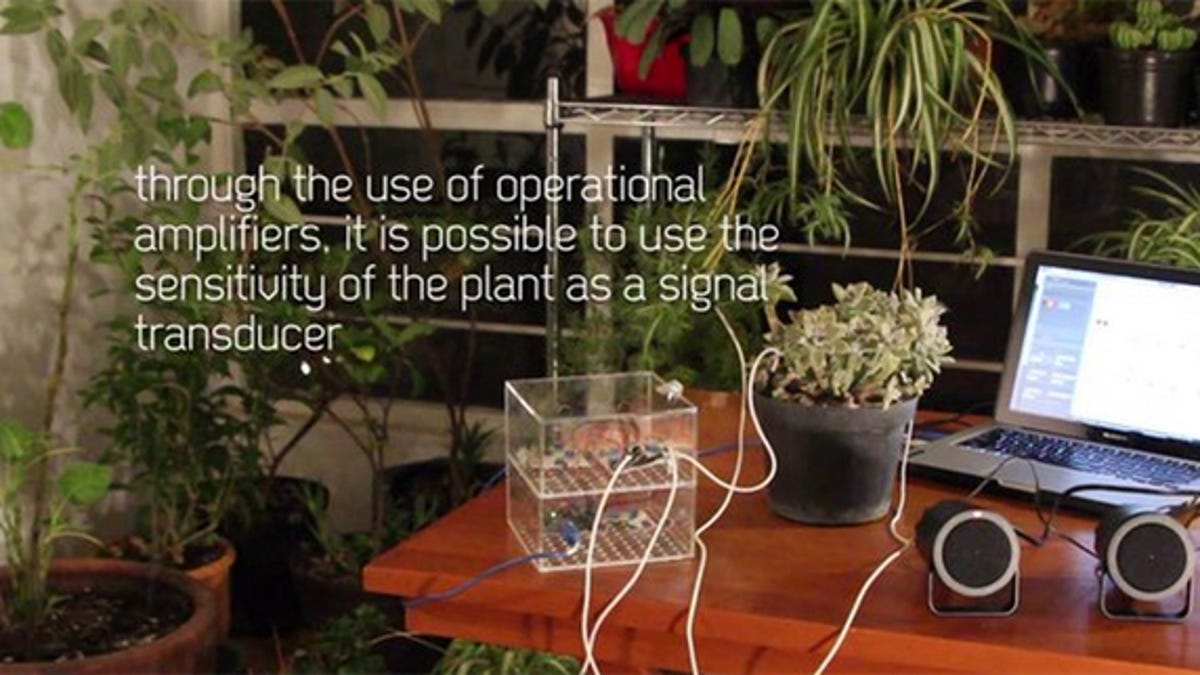Listen to the sound of plants responding to the world
Artist Leslie Garcia has used transducers and amplifiers to translate the "language" of plants into sounds audible to the human ear.

(Screenshot by Michelle Starr/CNET Australia)
Artist Leslie Garcia has used transducers and amplifiers to translate the "language" of plants into sounds audible to the human ear.
In 1949, Roald Dahl wrote a short story called The Sound Machine (PDF). In it, a man invents a machine that allows him to hear the sounds inaudible to humans due to their frequency outside the range of hearing — and discovers that plants do, in fact, make sound in response to the world.
Artist Leslie Garcia's "Pulsu(m) Plantae" has not, in fact, revealed that plants make noise. Instead, Garcia has analysed the physiological response of plants to certain external stimuli and created a real-time "audio prosthetic"; that is, a device that translates the plant's responses into audible sound.
It consists of sensors to monitor the plant's biofeedback, a transducer — a device that converts those readings into sound — and amplifiers to play those sounds to the listener. Garcia found that plants emit different-sounding reactions to touch, sound and light.
She also found that the plants "hum" to each other when their vessels are connected. Just changing which plants are connected can change the quality of the sound.
The idea that plants can "feel" is certainly not a new one; we can even see plants physically respond to light and water. Garcia's work, however, gives it an immediacy and sense of realness that may make you think twice before plucking a flower or walking on the grass when there's a perfectly serviceable path available.

